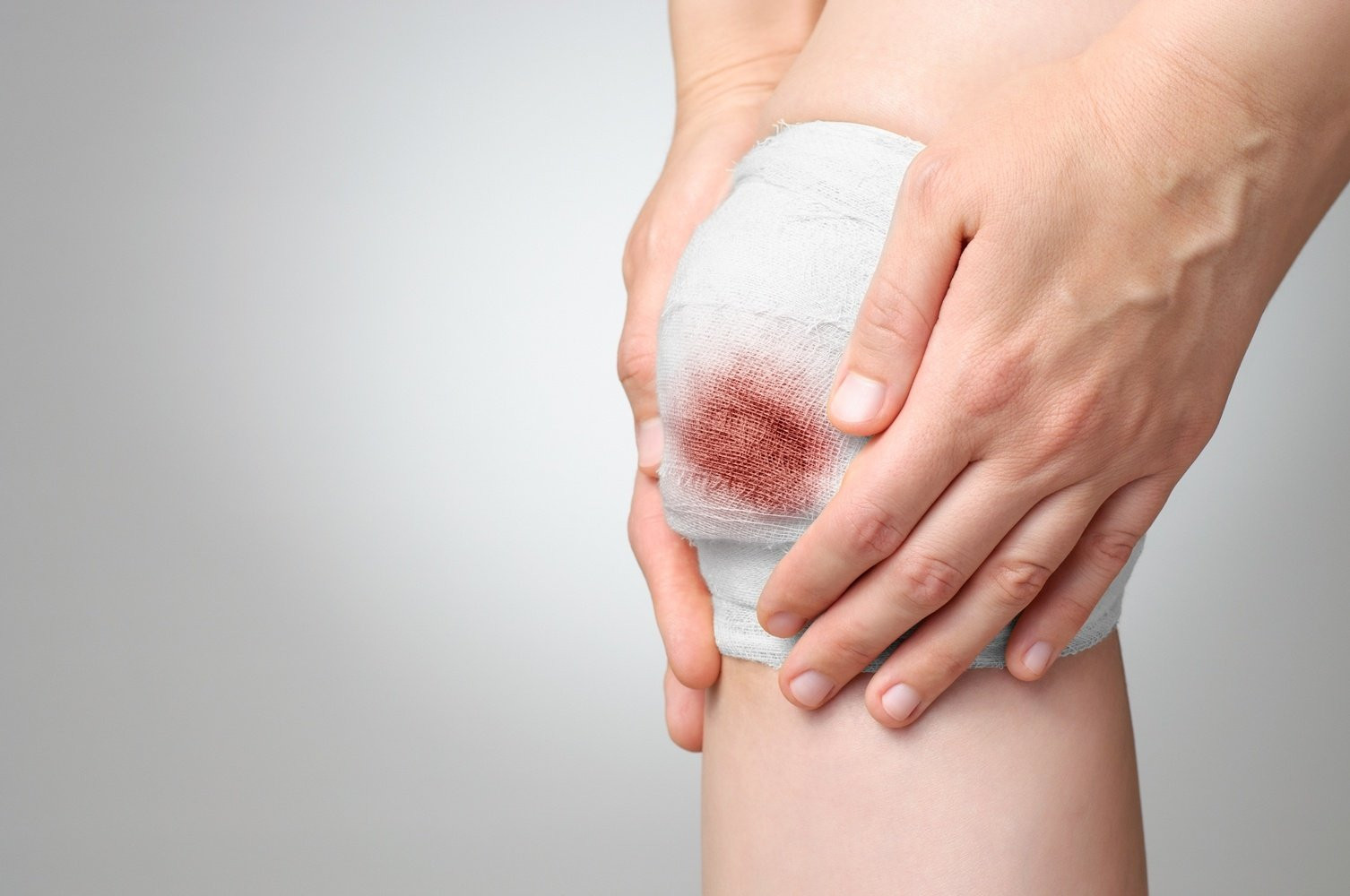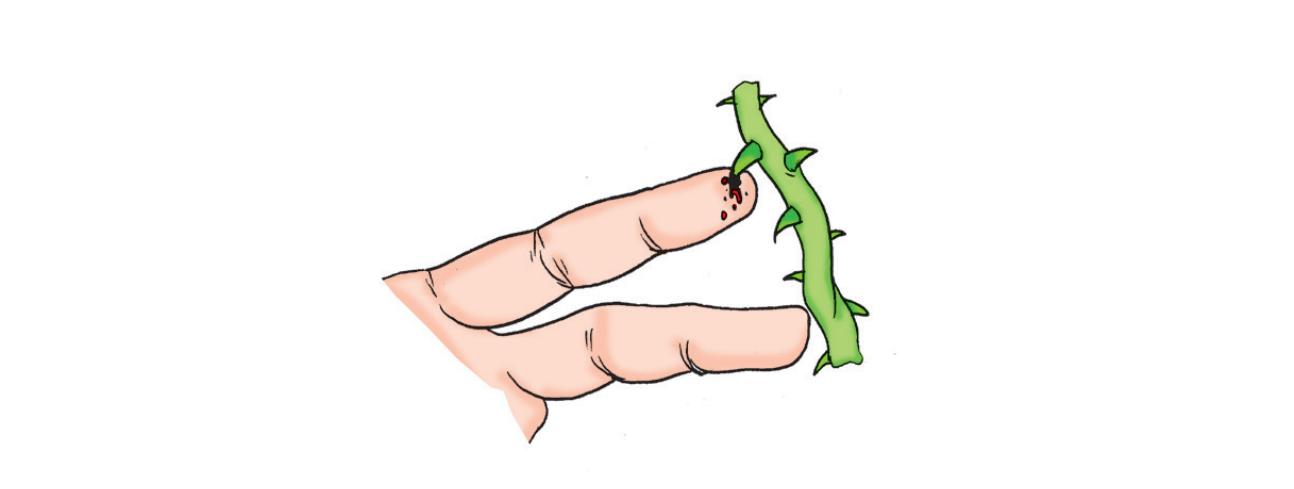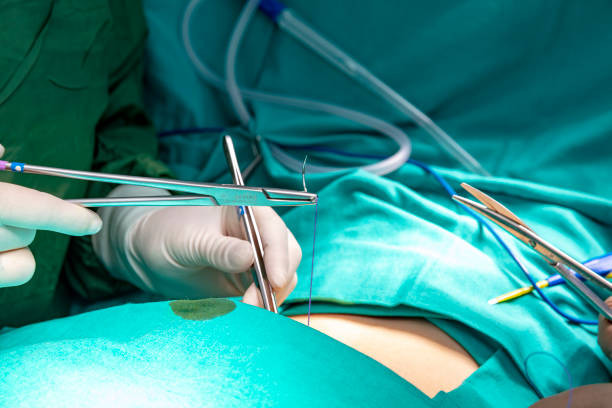Definition
Lacerations (vulnus laceratum) are open wounds that result from the tearing of the skin and the underlying tissue. Lacerations typically exhibit an irregular, asymmetrical form and indistinct wound margins. Minor lacerations can be treated at home. However, serious and large wounds require proper medical care in a healthcare facility. The wounds might need to be stitched to halt the bleeding effectively. The reason for this is that lacerations in particular body areas might result in profuse bleeding and pose a fatal danger if not managed appropriately. In addition, it is crucial to properly attend to the wounds after they are stitched to ensure optimal healing and prevent future complications.
According to the research, over 13.8 million emergency department visits in 2005, which accounted for nearly 12% of the total visits, were specifically for treating lacerations. Depending on the wound's location and severity, lacerations may be managed in an outpatient setting.
Causes
The cause of lacerations is typically linked to the use of the following items:
- Knife
- Sharp household utensil
- Shattered glass
- Particular cutting equipment
Bleeding can rapidly and heavily occur in cases of deep lacerations. In addition to the above objects, lacerations can also result from crashes on the highway. In this state, there is a potential for infection to occur in the ripped and inadequate wound healing, leading to unsightly scars.
Risk factor
Various risk factors contribute to the higher risk of experiencing lacerations, such as:
- Use of sharp tools to do household or domestic tasks, such as cutting with a knife
- Use of sharp machinery in the workplace
- Tendency to lose focus and attention when using sharp tools
Symptoms
The clinical manifestations resulting from lacerations can vary. This can depend on the wounded area, depth, and extent of the wounds. Common manifestations resulting from lacerations consist of:
- Discomfort in the injured area
- The margins of the damaged skin tissue are irregular
- Bleeding that ranges from minor to severe
- Blue bruises may appear
- Swelling in the injured area
- Erythema is observed in the vicinity of the injured site
If a laceration penetrates the subcutaneous fat and muscle tissue, significant bleeding may ensue, requiring prompt medical intervention.
Diagnosis
The diagnosis of laceration is typically established through medical interviews and physical examination of the patient. The doctor will inquire about the events that caused the wounds, symptoms, instances of bleeding, and the patient's medical history. The doctor will also assess the state of the wound, typically characterized by its exposed nature. Doctors seldom request diagnostic tests for tiny open wounds when there seem to be no significant complications that could arise from the wound.
Additional diagnostic tests may be warranted in cases when the patient is thought to have complications or other problems such as fractures or nerve injury. Some more tests that can be conducted in some cases include:
- Comprehensive medical check-up
- Radiographic assessment
- Ultrasound imaging, etc.
Management
You can treat the lacerations at home. However, since it could only provide temporary relief, seeking further treatment at the nearest healthcare facility is advisable. If you experience this condition, there are several steps you can take, specifically:
- Prioritize washing your hands with soap first to prevent the wound from being infected
- Apply pressure to the wounded area using a sterile cloth to halt the flow of blood
- Raise the injured extremities so they will sit in a higher position until the bleeding ceases
- Rinse the wound using a continuous flow of water
- Clean the surrounding wounded area with soap, ensuring that the soap does not come into contact directly with the wound to prevent any irritation
- After the bleeding has ceased, you may apply a light layer of petroleum jelly to the affected area
- Apply gauze to the wound and secure it with medical tapes
- Replace the gauze and plaster at least once a day or when the gauze appears moist and soiled
If you have not received a tetanus vaccination in the past 5 years and the wound appears to be deep or contaminated, it is recommended that you get a vaccine.
If you have treated your wounds at home, it is advisable to consult a doctor or visit a nearby healthcare facility to ensure that the torn wound is safe and will not become infected.
Complications
Bacterial infections are complications that could occur in lacerations. Open wounds risk being contaminated by bacteria, mainly if the injury is inflicted by a contaminated object. Indicators of an infected wound include several symptoms and signs:
- The laceration exhibits signs of erythema
- The pain is increasing or worsening
- Pus discharge from the wound
- The affected area is warm and swollen
In addition, other complications could occur in lacerations, such as:
- Missed foreign objects in the injured area
- Damage to the muscle tendons
- Nerve damage
- Separation of previously approximated wound edges resulting in inadequate closure of the tissue
Lacerations can lead to complications if they are deep and extensive. Hence, it is important to conduct a thorough examination to promptly identify and correctly address any potential issues, enhancing the patient's quality of life.
Prevention
Preventive measures are necessary to prevent potential complications that may occur from a lacerated wound. There are multiple steps you can take to avoid lacerations, such as:
- Exercise caution when handling sharp objects
- Always wear gloves or hand protector whenever possible while operating machines or handling sharp objects
- Complete concentration and attentiveness are required when handling sharp tools have the risk of injuring the body
When to see a doctor?
If you have wounds that resemble the following symptoms, it is advisable to consult a doctor to get further evaluation:
- The wound has a depth exceeding 1.5 cm
- The current wound is accompanied by an infection
- Uncontrolled bleeding that persists despite the pressure or bandaging that have been applied to the area for 10-20 minutes, or the bleeding is caused by a serious traffic accident
- Experiencing a lack of sensation or a tingling sensation in the location of the wound or above it
- Fever exceeding 38 degrees Celsius
- Chronic pain that persists despite the use of analgesics
The doctor will ask a series of questions related to the lacerations and symptoms you experience, perform a physical examination, and run certain supporting tests to establish a definitive diagnosis and give a suitable
Looking for more nformation about other diseases? Check here, yes!
- dr. Yuliana Inosensia
Healthline. Open wound. September 2018. Available from: https://www.healthline.com/health/open-wound
Newman RK, Mahdy H. Laceration. [Updated 2022 Feb 26]. In: StatPearls [Internet]. Treasure Island (FL): StatPearls Publishing; 2022 Jan-. Available from: https://www.ncbi.nlm.nih.gov/books/NBK545166/
Medline Plus. Laceration – sutures or staples – at home. January 2020. https://medlineplus.gov/ency/patientinstructions/000498.htm
Mayo Clinic. Cuts and scrapes: first aid. June 2022. Available from: https://www.mayoclinic.org/first-aid/first-aid-cuts/basics/art-20056711












